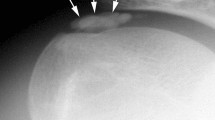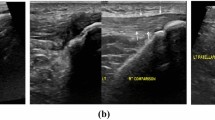Abstract
Purpose
Tendinopathy is a known adverse reaction associated to fluoroquinolones, but a meta-analysis was not yet published. The aim of this study was to conduct a systematic review and a meta-analysis of the scientific evidence evaluating the risk of tendon injury associated with fluoroquinolones.
Methods
A literature search was conducted to identify observational studies which reported results on the risk of Achilles tendon rupture (ATR), risk of Achilles tendinitis (AT), or risk of any tendon disorders (ATD). A meta-analysis was performed by pooling odds ratios (ORs) with their 95% confidence intervals (CIs).
Results
Fifteen studies were included in the meta-analysis. Treatment with fluoroquinolones was associated with an increased risk of ATR (OR 2.52 (95% CI 1.81–3.52), p < 0.001, I2 = 76.7%), an increased risk of AT (OR 3.95 (95% CI 3.11–5.01), p < 0.001, I2 = 0%), and increased risk of ATD (OR 1.98 (95% CI 1.62–2.43), p < 0.001, I2 = 84.5%). The initial risk estimates remained statistically significant among patients aged ≥ 60 years old. Risk estimates did not significantly change after depending on the concomitant use of corticosteroids or studies methodological quality assessment. The analysis according to the type of fluoroquinolones was only possible for ATR, which were ofloxacin and norfloxacin were found to increase the risk of this outcome, but not ciprofloxacin and levofloxacin.
Conclusions
The results of this meta-analysis confirm the risk of tendon injuries associated with fluoroquinolones. Older age and concomitant use of corticosteroids seem to be additional risk factors for tendinopathy.




Similar content being viewed by others
References
Wolfson JS, Hooper DC (1991) Fluoroquinolone antimicrobial agents. N Engl J Med 324:384–394
Khaliq Y, Zhanel GG (2003) Fluoroquinolone-associated tendinopathy: a critical review of the literature. Clin Infect Dis 36:1404–1410
Tomé AM, Filipe A (2011) Quinolones: review of psychiatric and neurological adverse reactions. Drug Saf 34:465–488
Poluzzi E, Raschi E, Motola D, Moretti U, De Ponti F (2010) Antimicrobials and the risk of torsades de pointes: the contribution from data mining of the US FDA adverse event reporting system. Drug Saf 33:303–314
Pierfitte C, Gillet P, Royer RJ (1995) More on fluoroquinolone antibiotics and tendon rupture. N Engl J Med 332:193
US US Food and Drug Administration. FDA News Release. U.S. Food and Drug Administration. https://www.fda.gov/newsevents/newsroom/pressannouncements/ucm612995.htm. Accessed 14 May 2019
US Food and Drug Administration. Postmarket Drug Safety Information for Patients and Providers. http://wayback.archive-it.org/7993/20170112032310/http://www.fda.gov/Drugs/DrugSafety/PostmarketDrugSafetyInformationforPatientsandProviders/ucm126085.htm. Accessed 14 May 2019
European Medicines Agency. Disabling and potentially permanent side effects lead to uspension or restrictions of quinolone and fluoroquinolone antibiotics. https://www.ema.europa.eu/en/medicines/human/referrals/quinolone-fluoroquinolone-containing-medicinal-products. Accessed 14 May 2019
Morales DR, Slattery J, Pacurariu A, Pinheiro L, McGettigan P, Kurz X (2019) Relative and absolute risk of tendon rupture with fluoroquinolone and concomitant fluoroquinolone/corticosteroid therapy: population-based nested case-control study. Clin Drug Investig 39:205–213
Stephenson AL, Wu W, Cortes D, Rochon PA (2013) Tendon injury and fluoroquinolone use: a systematic review. Drug Saf 36:709–721
van der Vlist AC, Breda SJ, Oei EHG, Verhaar JAN, de Vos RJ (2019) Br J Sports Med. https://doi.org/10.1136/bjsports-2018-099991
Yu X, Jiang DS, Wang J, Wang R, Chen T, Wang K, Cao S, Wei X (2019) Fluoroquinolone use and the risk of collagen-associated adverse events: a systematic review and meta-analysis. Drug Saf. https://doi.org/10.1007/s40264-019-00828-z
Persson R, Jick S (2019) Clinical implications of the association between fluoroquinolones and tendon rupture: the magnitude of the effect with and without corticosteroids. Br J Clin Pharmacol 85:949–959
Nyyssönen T, Lantto I, Lüthje P, Selander T, Kröger H (2018) Drug treatments associated with Achilles tendon rupture. A case-control study involving 1118 Achilles tendon ruptures. Scand J Med Sci Sports 28:2625–2629
Daneman N, Lu H, Redelmeier DA (2015) Fluoroquinolones and collagen associated severe adverse events: a longitudinal cohort study. BMJ Open 5:e010077
Ioannidis JP, Patsopoulos NA, Rothstein HR (2008) Reasons or excuses for avoiding meta-analysis in forest plots. BMJ 336:1413–1415
Smith TC, Spiegelhalter DJ, Thomas A (1995) Bayesian approaches to random-effects meta-analysis: a comparative study. Stat Med 14:2685–2699
Berlin JA (1995) Invited commentary: benefits of heterogeneity in meta-analysis of data from epidemiologic studies. Am J Epidemiol 142:383–387
Moher D, Liberati A, Tetzlaff J, Altman DG, PRISMA Group (2009) Preferred reporting items for systematic reviews and meta-analyses: the PRISMA statement. PLoS Med 6:e1000097
U.S. National Library of Medicine. Medical Subject Headings 2019. U.S. National Library of Medicine. https://meshb.nlm.nih.gov/search. Accessed 14 May 2019
ICH MedDRA Maintenance and Support Services Organization (MSSO). International Council for Harmonisation of technical requirements for Pharmaceuticals for Human use (ICH). https://www.meddra.org/. Accessed 14 May 2019
Elsevier. Embase Indexing and Emtree. https://www.elsevier.com/solutions/embase-biomedical-research. Accessed 14 May 2019
Wells GA, Shea B, O’Connell D et al (2014). The Newcastle-Ottawa Scale (NOS) for assessing the quality of nonrandomised studies in meta-analyses. http://www.ohri.ca/programs/clinical_epidemiology/oxford.asp. Accessed 14 May 2019
DerSimonian R, Laird N (1986) Meta-analysis in clinical trials. Control Clin Trials 7:177–188
Higgins JP, Thompson SG, Deeks JJ, Altman DG (2003) Measuring inconsistency in meta-analyses. BMJ 327:557–560
B Publication bias (2009) In: Borenstein M, Hedges LV, JPT H, Rothstein HR (eds) Introduction to meta-analysis. Wiley, Chichester, pp 277–291
van der Linden PD, van de Lei J, Nab HW, Knol A, Stricker BH (1999) Achilles tendinitis associated with fluoroquinolones. Br J Clin Pharmacol 48:433–437
Sode J, Obel N, Hallas J, Lassen A (2007) Use of fluroquinolone and risk of Achilles tendon rupture: a population-based cohort study. Eur J Clin Pharmacol 63:499–503
Hori K, Yamakawa K, Yoshida N, Ohnishi K, Kawakami J (2012) Detection of fluoroquinolone-induced tendon disorders using a hospital database in Japan. Pharmacoepidemiol Drug Saf 21:886–889
Humbyrd CJ, Bae S, Kucirka LM, Segev DL (2018) Incidence, risk factors, and treatment of Achilles tendon rupture in patients with end-stage renal disease. Foot Ankle Int 39:821–828
Jupiter DC, Fang X, Ashmore Z, Shibuya N, Mehta HB (2018) The relative risk of Achilles tendon injury in patients taking quinolones. Pharmacotherapy 38:878–887
Barge-Caballero E, Crespo-Leiro MG, Paniagua-Martín MJ, Muñiz J, Naya C, Bouzas-Mosquera A, Piñón-Esteban P, Marzoa-Rivas R, Pazos-López P, Cursack GC, Cuenca-Castillo JJ, Castro-Beiras A (2008) Quinolone-related Achilles tendinopathy in heart transplant patients: incidence and risk factors. J Heart Lung Transplant 27:46–51
van der Linden PD, Sturkenboom MC, Herings RM, Leufkens HM, Rowlands S, Stricker BH (2003) Increased risk of Achilles tendon rupture with quinolone antibacterial use, especially in elderly patients taking oral corticosteroids. Arch Intern Med 163:1801–1807
Seeger JD, West WA, Fife D, Noel GJ, Johnson LN, Walker AM (2006) Achilles tendon rupture and its association with fluoroquinolone antibiotics and other potential risk factors in a managed care population. Pharmacoepidemiol Drug Saf 15:784–792
Wise BL, Peloquin C, Choi H, Lane NE, Zhang Y (2012) Impact of age, sex, obesity, and steroid use on quinolone-associated tendon disorders. Am J Med 125:1228.e23–1228.e28
Corrao G, Zambon A, Bertù L et al (2006) Evidence of tendinitis provoked by fluoroquinolone treatment: a case-control study. Drug Saf 29:889–896
van der Linden PD, Sturkenboom MC, Herings RM, Leufkens HG, Stricker BH (2002) Fluoroquinolones and risk of Achilles tendon disorders: case-control study. BMJ 324:1306–1307
Williams RJ 3rd, Attia E, Wickiewicz TL, Hannafin JA (2000) The effect of ciprofloxacin on tendon, paratenon, and capsular fibroblast metabolism. Am J Sports Med 28:364–369
Tsai WC, Hsu CC, Chen CP et al (2011) Ciprofloxacin up-regulates tendon cells to express matrix metalloproteinase-2 with degradation of type I collagen. J Orthop Res 29:67–73
Shakibaei M, de Souza P, van Sickle D, Stahlmann R (2001) Biochemical changes in Achilles tendon from juvenile dogs after treatment with ciprofloxacin or feeding a magnesium-deficient diet. Arch Toxicol 75:369–374
Pouzaud F, Bernard-Beaubois K, Thevenin M, Warnet JM, Hayem G, Rat P (2004) In vitro discrimination of fluoroquinolones toxicity on tendon cells: involvement of oxidative stress. J Pharmacol Exp Ther 308:394–402
Author information
Authors and Affiliations
Contributions
Carlos Alves conceived and designed the study, performed research, analyzed data, and wrote the paper. Diogo Mendes and Francisco Batel Marques conceived the study and wrote the paper.
Corresponding author
Ethics declarations
Conflict of interest
The authors declare that they have no conflict of interest.
Additional information
Publisher’s note
Springer Nature remains neutral with regard to jurisdictional claims in published maps and institutional affiliations.
Electronic supplementary material
Supplemental Figure 1
(DOCX 21 kb)
Supplemental Figure 2
(DOCX 17 kb)
Supplemental Figure 3
(DOCX 21 kb)
Supplemental Figure 4
(DOCX 15 kb)
Supplemental Figure 5
(DOCX 15 kb)
Supplemental Figure 6
(DOCX 16 kb)
Supplemental Table 1
(DOC 64 kb)
Supplemental Table 2
(DOCX 17 kb)
Supplemental Table 3
(DOCX 17 kb)
Rights and permissions
About this article
Cite this article
Alves, C., Mendes, D. & Marques, F.B. Fluoroquinolones and the risk of tendon injury: a systematic review and meta-analysis. Eur J Clin Pharmacol 75, 1431–1443 (2019). https://doi.org/10.1007/s00228-019-02713-1
Received:
Accepted:
Published:
Issue Date:
DOI: https://doi.org/10.1007/s00228-019-02713-1




